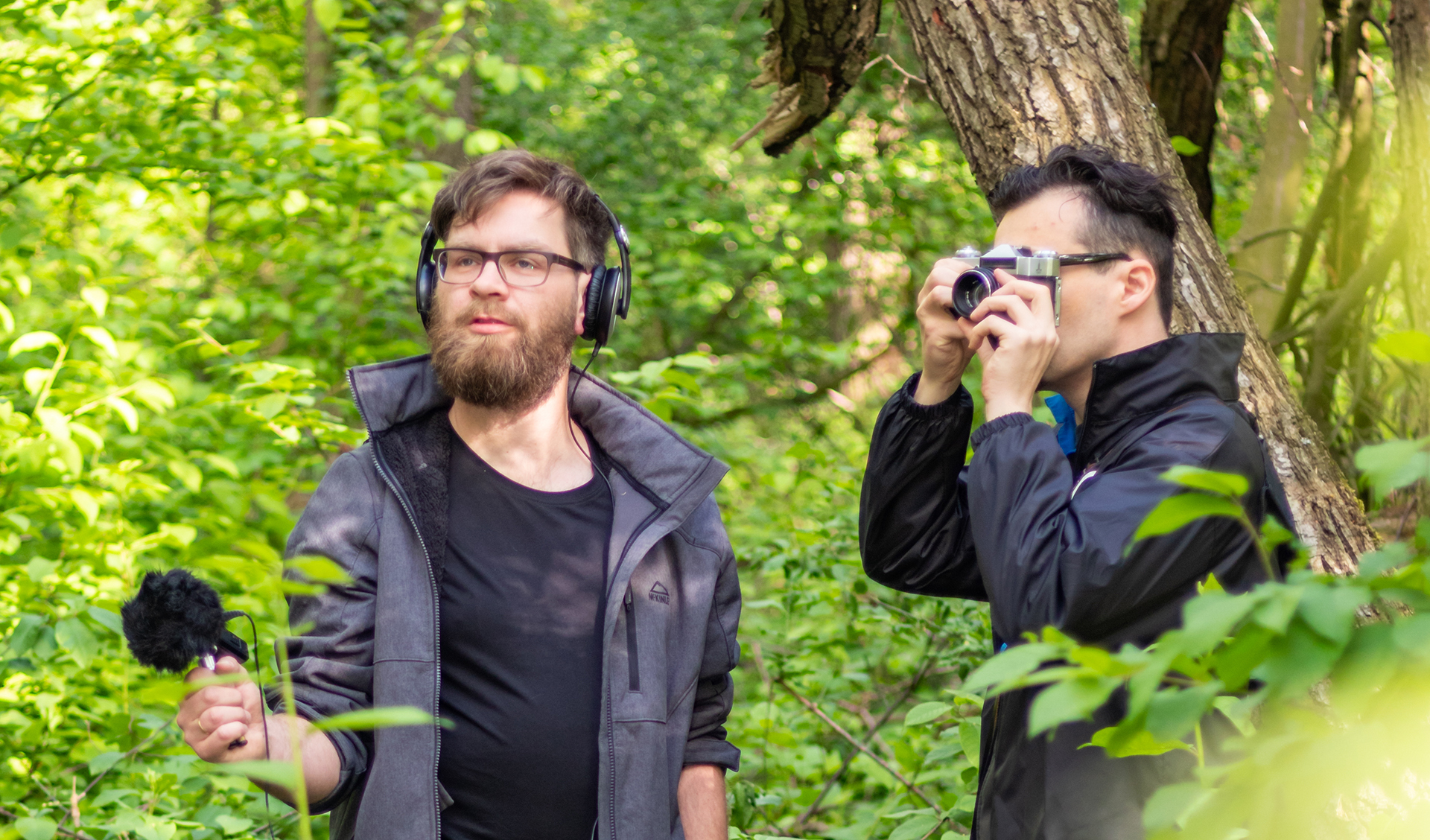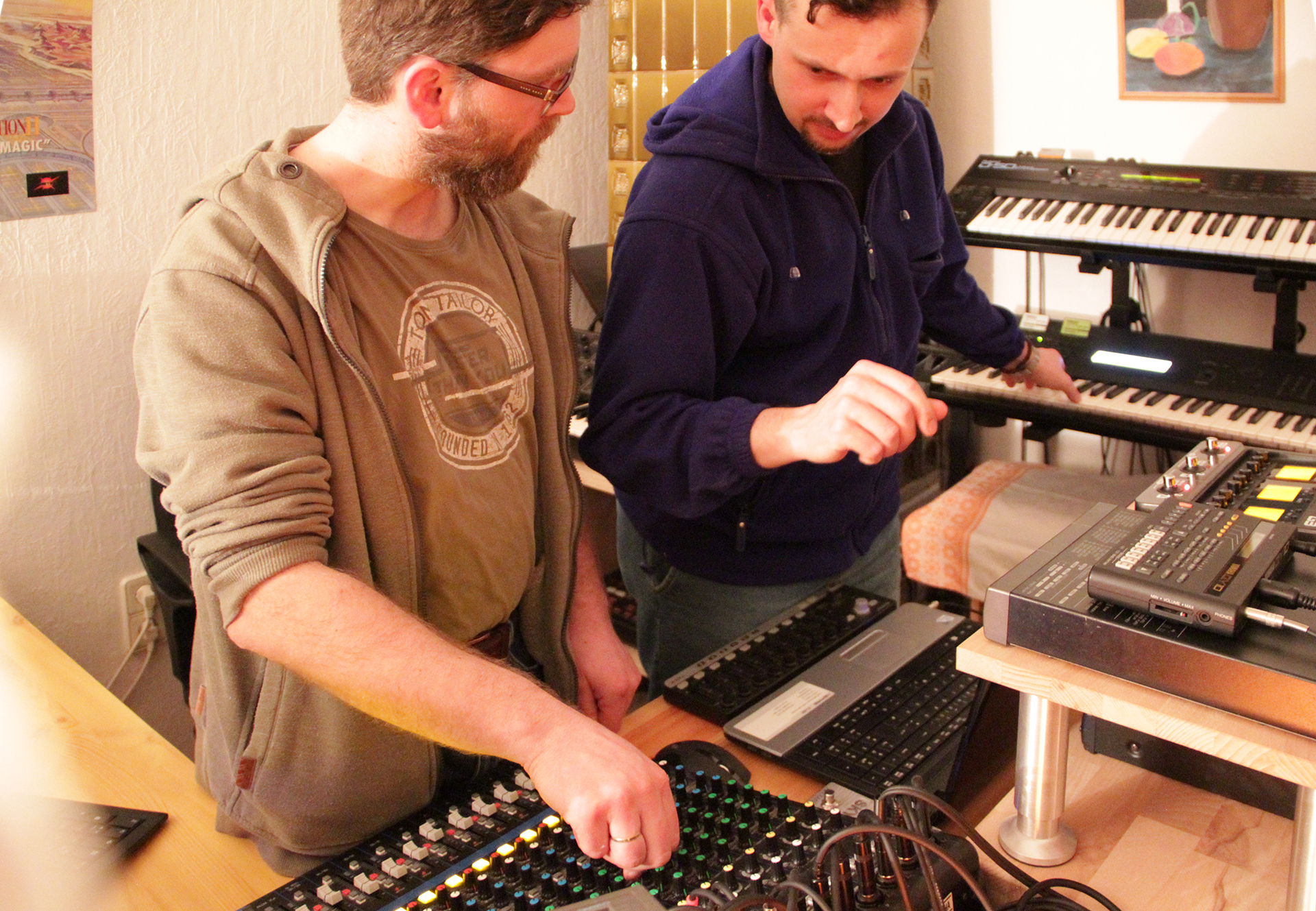
Nature's Symphony Unveiled: Exploring the Enchanting Soundscapes of the Forest
Nature's Symphony Unveiled: Exploring the Enchanting Soundscapes of the Forest
»Embarking on a journey through the woods surrounding the Zittauer Mountains, Marcel Frehse and Heiko Fehrmann capture the ethereal melodies that dance beneath the leaves, whisper among the branches, and carry secrets within. Armed with analog cameras and field recorders, they delve into the heart of the forest, seeking moments when nature herself tells her tale. Through their compositions, blending natural sounds with electronic music, they forge a musical connection with the landscape. Join them on their sonic odyssey, where the forest speaks its language, and sounds become enchanting notes in the symphony of nature.«
Marcel Frehse and Heiko Fehrmann venture into the forests around the Zittauer Mountains. Equipped with analog cameras and a field recorder, they let themselves be carried by nature in search of those special moments: 'Capturing the forest, ideally without human influences,' says Heiko, laughing.

Their aim is to 'immerse deep into the forest away from the paths and establish a close relationship with this natural habitat.' They want to listen. Listen to a world where they find inspiration, and its sounds become part of their music. And that takes time. Once they find one of these places, they stand still. They observe and listen. A rustling in the leaves on the ground, a blackbird in the thicket, and high above, branches rub against each other in the cold wind. Their own breath is the only human sound they try to suppress. This experience has connected them for years.
And their shared passion for composing music also unites them. Together, they form the music project Nemo & Jaymon and release their collaborative music on their netlabel Forest Roots. Nevertheless, they are as different as pine and deciduous trees. One works in web hosting, the other is a social worker. Heiko is influenced by house and techno. 'At some point, I discovered reggae and dub, which had strong influences on my compositions.' He loves the clarity in music and creates the beats and rhythm elements. 'From the cracking, creaking of the trees, you can easily filter out a bass kick and develop a rhythm.'
Marcel, as he describes himself, is the melancholic type who deals with synthesizers. He refines synth patches, manipulates sound overlays and melodies until one of those distinct sounds is created, reflecting his impression of the experience.
And at his home, it quickly becomes clear what he means by 'sensing sounds' and 'creating moods.' His work with synthesizers has long passed the advanced stage. Whenever time allows, he experiments with new devices. 'It's not always the newest ones that produce the desired sound, the intended sonic world.' His voice is full of fascination as he describes the functions and possibilities of his collection of music devices spanning four decades. And you can hear that, too.
They each create music individually. Each of them has a different perspective on nature, listens to the forest differently, perceives different sounds. The field recordings flow into the music. But each of them uses these recordings as sources for their own sound compositions. And at the same time, the recordings are a connection to nature itself, a confirmation.

Later, they meet, layer the sound tracks, experiment with sounds and rhythms until the tracks are 'round.' It's like with all creative processes: 'You must know when it's finished; it must not contain too much, but the idea must also be recognizable. When you see the swaying trees in front of you and feel the crackling of the frozen ground, then you've succeeded in transferring that mood into the music.' Their goal isn't to depict the environment. They want to mirror the feeling, an idea of the forest and its significance beyond the urban world. And that's different every time.
At some point, they were out at night, and then there was this owl, right beside them, very loud. There was no other way. This later became the track 'Night in the Forest.' Synthesizers create a space, a space made of sounds, sounds that originate in the distance. These ethereal sounds lead us away, away from people and traffic, to the origin of the natural world. To places, dark and menacing, where light becomes weak, or to places where music opens a door, and the treetops form a cathedral.
Peter Wohlleben talks about a plant world where animals can live undisturbed – a world that doesn't need humans – where plants can thrive, trees can grow gnarled, and when their time comes, they can stay there.
As the music pulsates, concentration grows, and thoughts flow further out. What significance does the forest hold for us? It may be uncertain whether trees form social relationships with each other. What is certain, however, is that humans are dispensable for all other life. The importance of trees and forests to humans, on the other hand, is undeniable, and each would describe their influence differently.
For many, forest is a place of relaxation. At the same time, it possesses something elusive, mystical. For those familiar with forests, trees and the interwoven plants exude an attraction, something soothing, or are simply beautiful. Like the seas, forests are a primal form of our natural environment. So, it's right for us as humans to return to the forests, back to ourselves and our natural habitat.
These thoughts need not go so far. What Forest Roots evokes is certainly our attention. And because this world and our emotions are so difficult to put into words, there is this music, to find a way into our hearing and our senses.
This music is nothing when you're in the midst of a busy day, ticking off your to-dos. This music, spanning between ambient and dub with many subtle influences, requires time like a walk in the forest do. And taking that time is definitely worth it. So, sit back and listen in ..